Among our favorite kitchen doodads, there will always be a place for the spiralizer. Why? Because in this age of self-care and wellness, who can get mad at a tool whose sole purpose is to help us eat more veggies and actually like it?

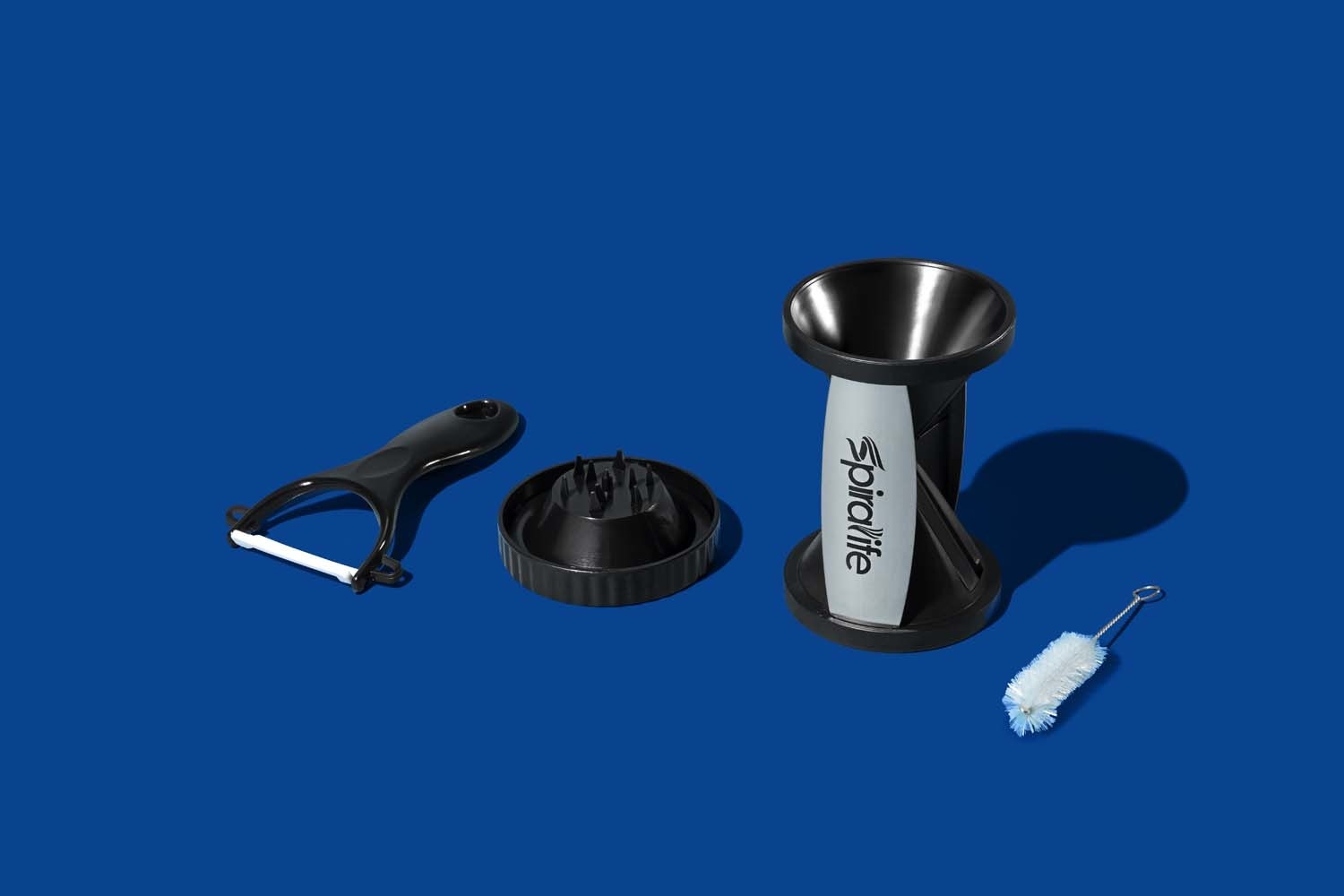
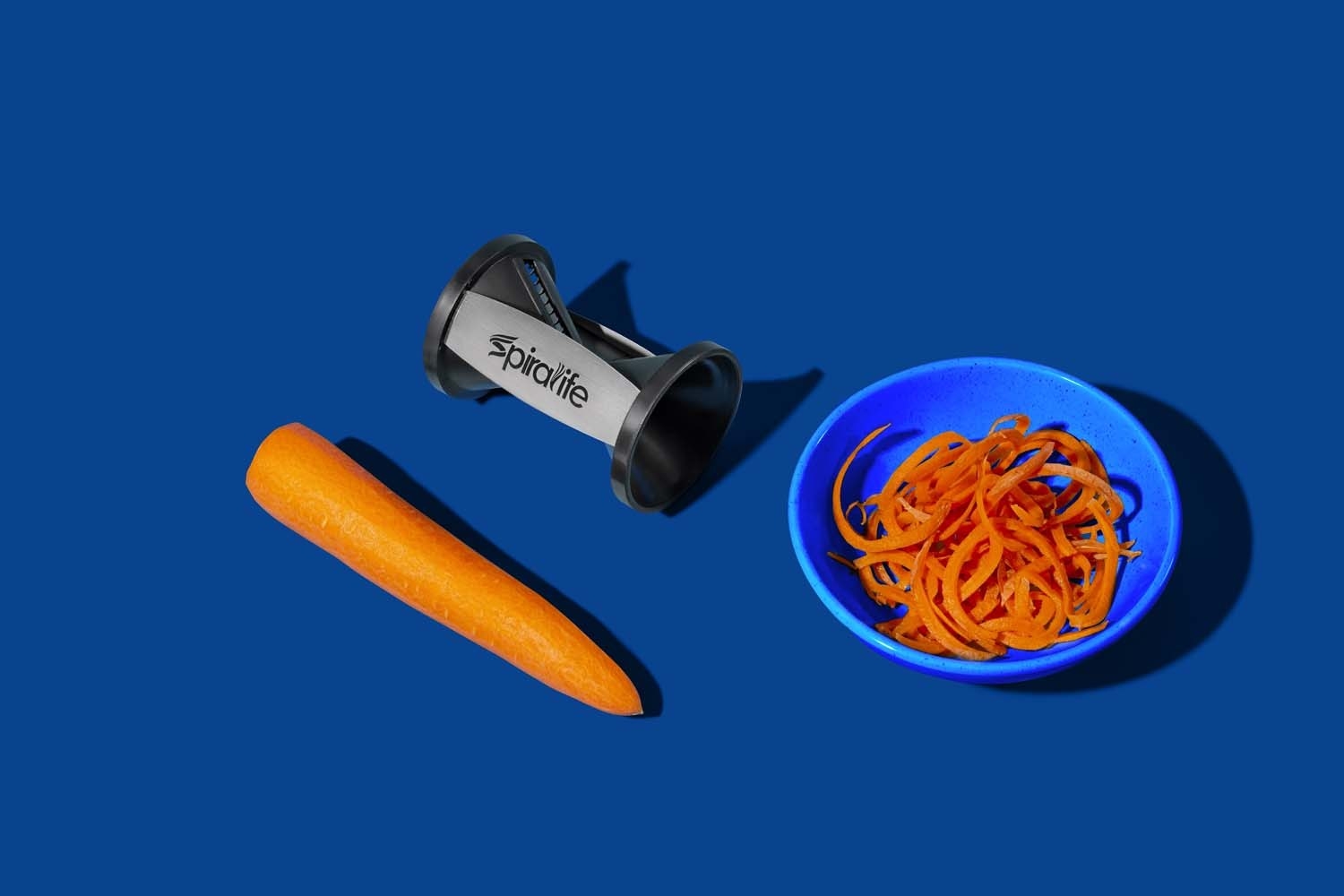

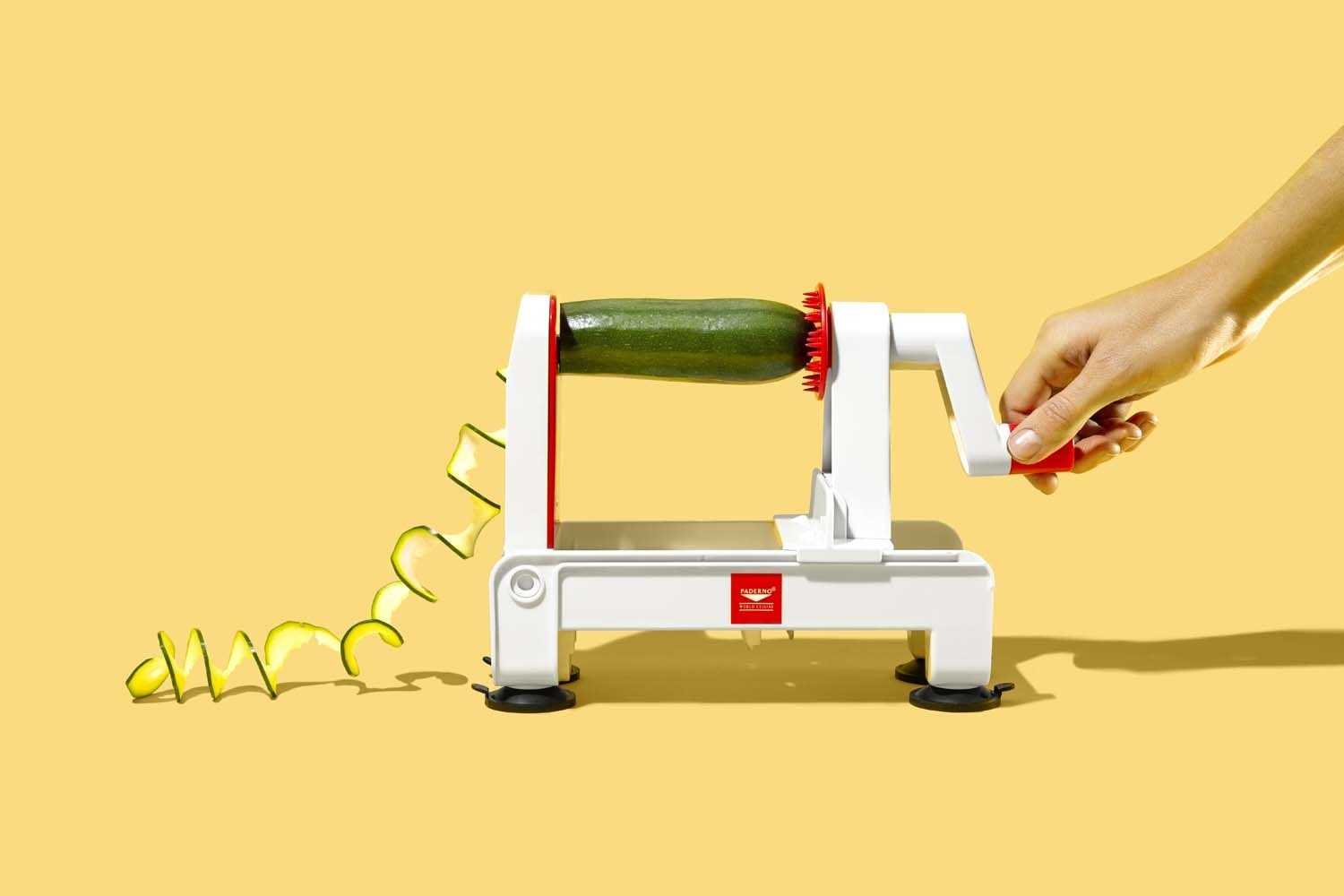

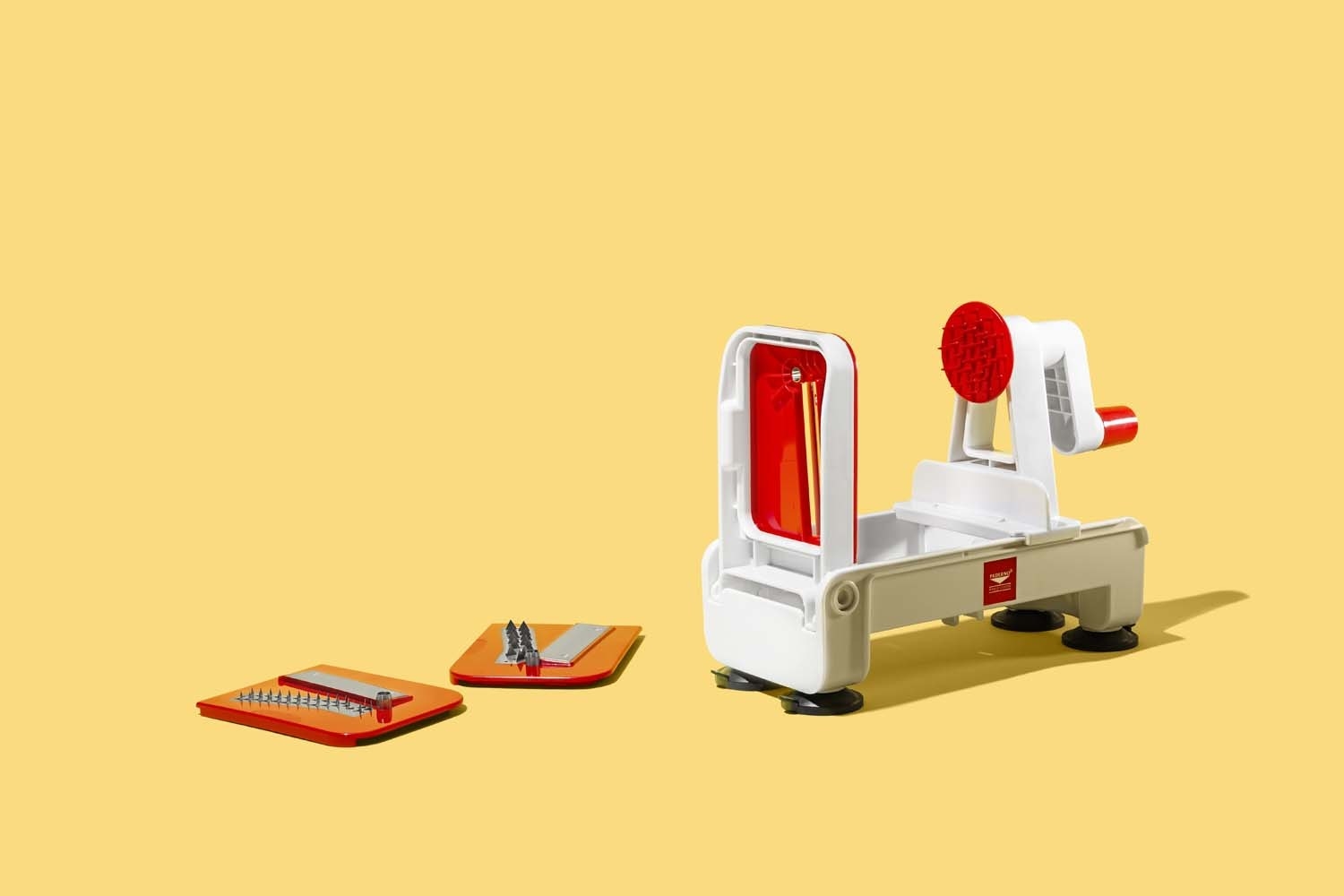

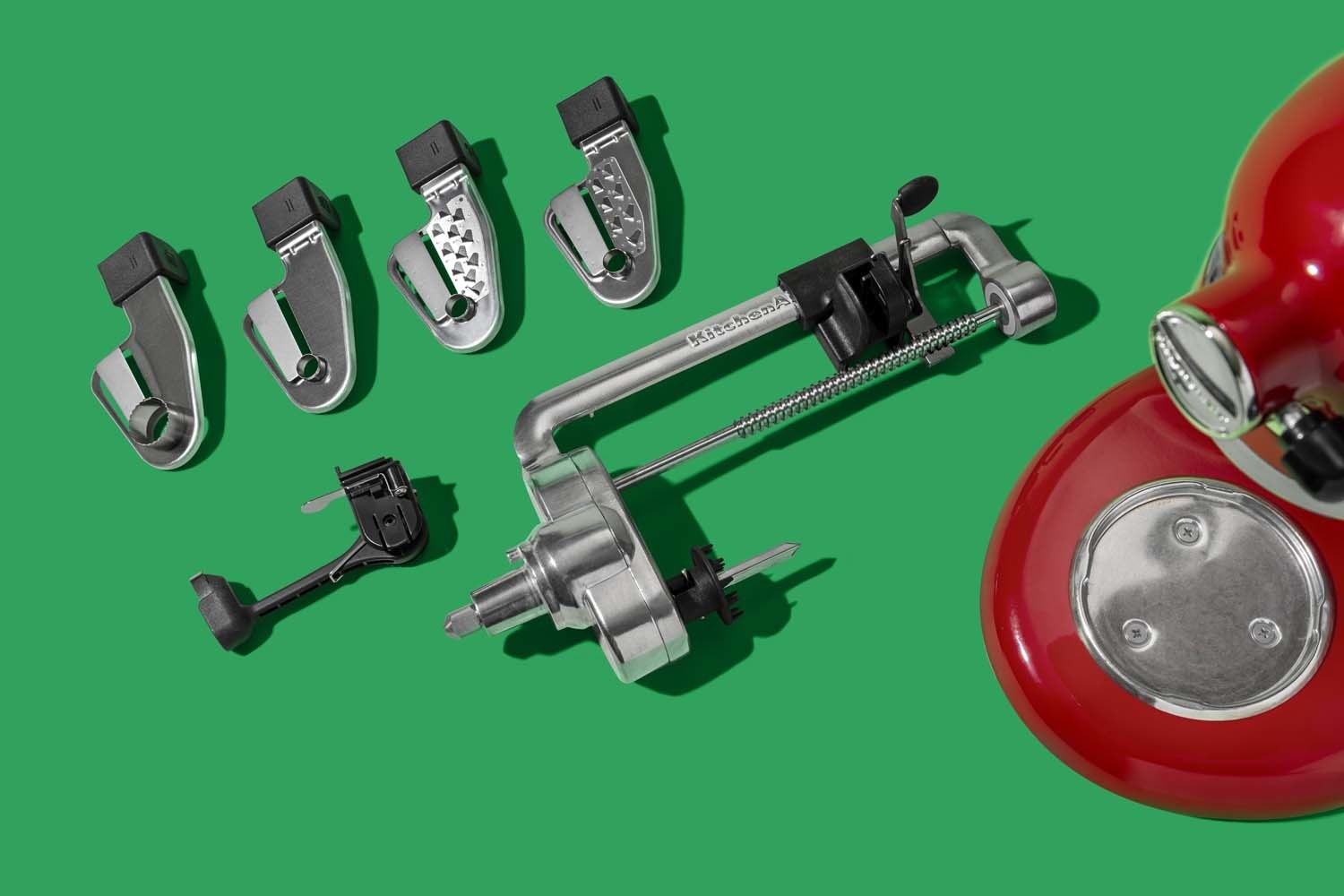
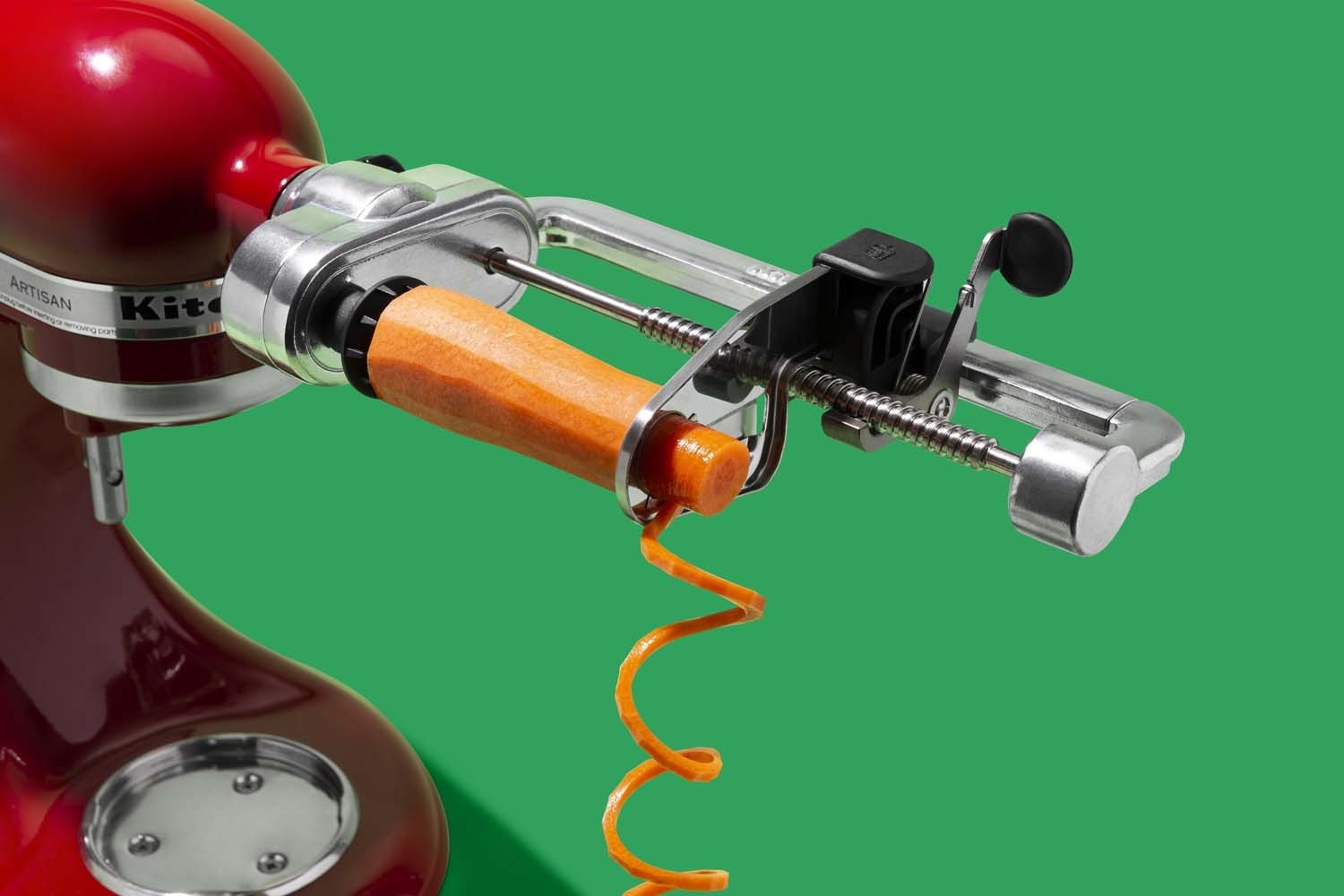

We hope you love our recommendations! Some may have been sent as samples, but all were independently selected by our editors. Just FYI, BuzzFeed and its publishing partners may collect a share of sales and/or other compensation from the links on this page.
What can't be turned into a noodle?
Spiral slicers come in a variety of models, but they all do the same thing: turn fresh veggies (or fruit) into curly, spiral-like noodles you can eat raw or cooked. Whether it’s making zucchini noodles (or “zoodles,” which we cannot write without quotes) or cranking out salad toppings and fruit garnishes, spiralizers make it easy to level up your nutrition.
Spiralizers are ideal not only for the health-obsessed and carb-averse but anyone who likes to be creative with their food. So we took a bunch of spiralizers out for a spin, testing each on how easy they were to set up, use, and clean in addition to how well they could accommodate produce of different sizes and shapes. From a small handheld wonder to our favorite hand-crank model, below you’ll find the best spiralizers for any budget.
Editor's Note: We're currently updating these picks! Check back soon for more.


If you’re not sure whether the spiralizer life is for you (it is), the SpiraLife Vegetable Slicer is the best option for newbies and skeptics. Out of all our favorite spiral slicers, the SpiraLife is the cheapest, smallest, and easiest to clean. And though spiralizers at this price point require a little more elbow grease, the SpiraLife was the easiest to work with during our testing and came with practical accessories to boot.
Direct comparisons aside, spiralizers generally fall into two camps: handheld or tabletop. Handheld models tend to be more budget-friendly and take less space in the kitchen, while tabletop models are easier to use and accommodate bigger and more nutrient-dense vegetables that rarely need to be trimmed to size.

So if you want to spend the bare minimum and have zero interest in spiralizing, say, butternut squash, the SpiraLife is a no-frills option that’ll get the job done. Its dual stainless-steel blade allows cooks to switch between wide ribbons and spaghetti-like noodles. The way it works is simple: Just insert the vegetable and give it a twist (kind of like a pencil sharpener). As you turn it, the veg goes through the blade and long, curly strands fall out. You’re also left with the vegetable’s core, which can vary in size depending on the make of the slicer. Of the spiralizers we tested at this price point, we found that the SpiraLife gave us the smallest core and gave us more “zoodle” for our buck.
Now, if you keep tabs on the exciting world of veggie noodles, you may be familiar with the most famous handheld spiralizer of all: the as-seen-on-TV Veggetti. The Vegetti might — infomercial voice — “make unforgettable garnishes in seconds,” but we prefer the SpiraLife for a number of reasons, and not only because “SpiraLife” is slightly less embarrassing to say than “Veggetti.”
While some handheld slicers we tested have blades that simply aren’t sharp enough to produce consistent, springy noodles, the SpiraLife cuts veggies without a hitch. Zucchinis and cucumbers take under a minute to spiralize, while heftier vegetables like carrots take a little longer, depending on their size. The only downfall? You’ll need to slice oddly sized veggies to fit into the SpiraLife’s two-and-half-inch mouth. So forget squash or turnips. This model is designed for softer fruits and vegetables.

Having said that, using the Spiralife does take a bit of effort. You’ll need to push and twist with both arms to make it happen, especially if you are spiralizing something other than a zucchini. Overall, the effort is minimal, but folks prone to wrist, hand, or arm pain might think about investing in one of our other winners. The slicer does come with a grip cap that you can affix to the vegetable so you can get a better grip, but we didn’t need it.
The SpiraLife also comes with some bonus items. For around the same price as other handheld spiralizers, you also get a peeler, a scrub brush, and a carrying case. Sure, the tools may not be restaurant-grade quality, but they’re useful — especially the brush, which you’ll need to get veggie bits and pieces out of the blade. Luckily, the whole thing is dishwasher-friendly, so you don’t have to worry too much about cleanup.
All in, the SpiraLife is a great option for anyone who wants to add a little spiralized variety to their cooking. It’s incredibly simple to use and produced the most noodles out of all the models we tested. And because of its compact size, it’ll fit neatly in any drawer in your kitchen. Just don’t make it the junk drawer.
Get it from Amazon for $11.

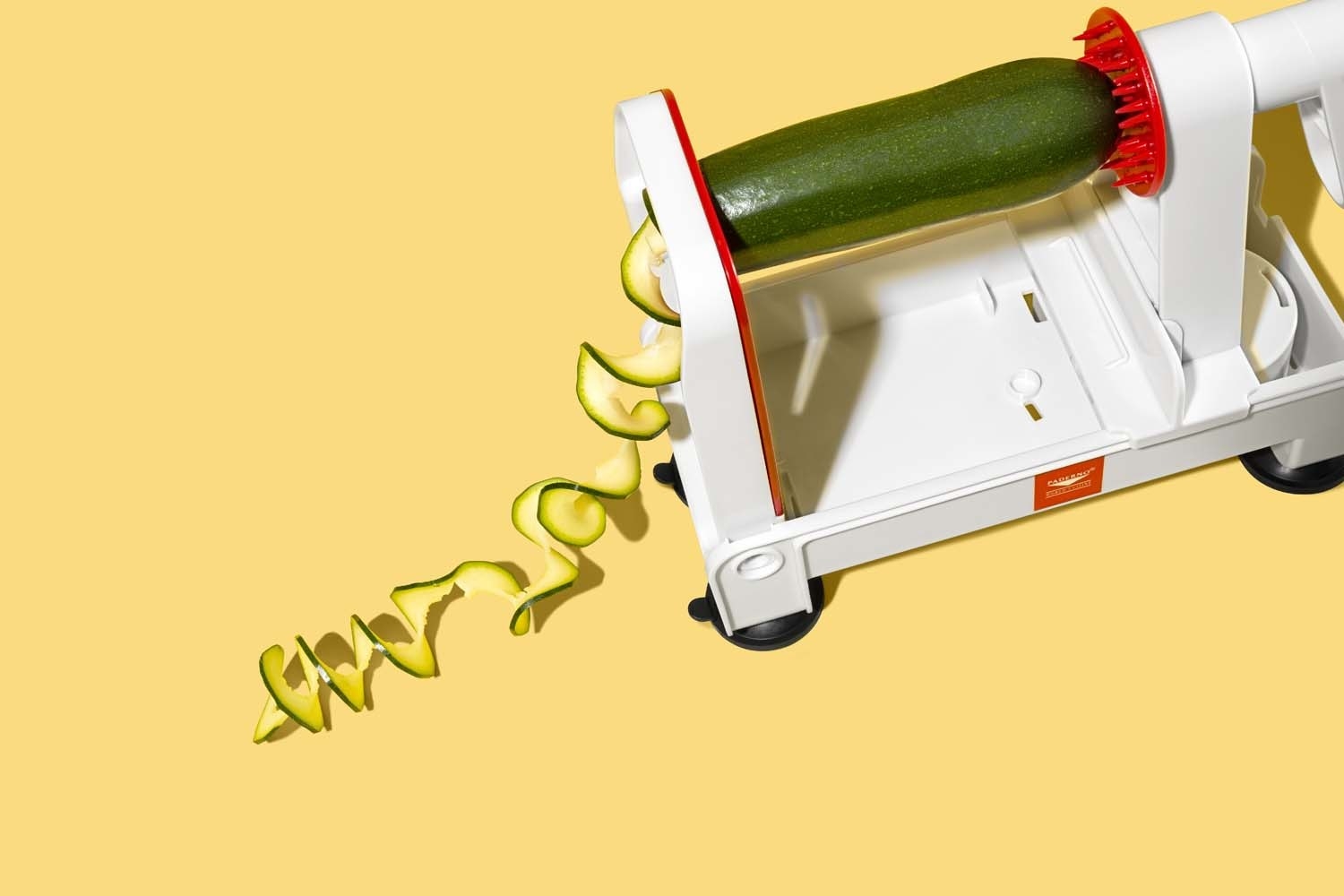
When you’re ready to spiralize on the regular, the Paderno Tri-Blade Spiralizer is your best bet. Yes, it requires some counter space. And yes, it wouldn’t look out of place in a torture chamber, if that torture chamber had a kitchen. But investing in this tabletop slicer is a smart choice for folks who want to work with a greater variety of fruits and vegetables and want to do it quickly, with less effort.

The Paderno requires some assembly, but it took our testers mere minutes to figure out how to set it up. Overall, we love the slicer’s collapsible design: Slide a few components around here and there, flip up the blade, lock in the food holder and crank handle, and you’re good to go. Once assembled, the Paderno attaches to the counter using four very sturdy suction cups. You can detach the suction cups with a release tab, which is a design feature you won’t appreciate until you’re using brute force to yank another model off the counter. When done, the whole thing folds back down to a compact size for storage.
The slicer works like so: First, you center the produce between the blade and food holder. Then, while you gently push a lever to apply pressure with one hand and turn the crank with the other, the produce goes through the blade to make the spiral cuts. It’s easy and requires less effort than any handheld model. We shredded a raw potato in less than 10 seconds (think of all the curly fries!). Apples and beets were just as easy. With some of the other models at this price point, it was difficult to exert enough pressure evenly to make sure the resulting spiralized vegetables did not break apart. Not so with the Paderno! The consistency of the spiralized fruits and vegetables was excellent.

You get three blade types, all of which store neatly in the body of the slicer when not being used. You’ll definitely get most out of the blade that makes thin noodles, but we’re sure you’ll also find uses for the thick-noodle and flat-ribbon blades (summer squash frittata, anyone?).
You might be reading this and thinking, ”If the Paderno Tri-Blade is so awesome, then the four-blade slicer must be even better!” Not the case. For whatever reason, the collapsible Paderno spiralizers with more than three blades are just not as sturdy. The components of the four-blade felt loose and the whole thing felt like it was going to shake apart when spiralizing some of the harder vegetables, like sweet potatoes. This rickety feeling made the entire experience more difficult, especially when it came to turning the crank. While the Paderno units do come with a one-year warranty, the durability of the original tri-blade stands out. Once you get this sucker mounted to your counter and start spinning that handle, expect smooth sailing and piles of “zoodles.”

Compared with other tabletop units, this one was easiest to use and resulted in the best spiralized fruits and vegetables. The Paderno is also unique in that you can fold it up and stash it. Some of our testers even liked its looks enough to leave it on their counter assembled. Either way, the Paderno is the clear winner of the manual tabletop spiralizers. Get ready to welcome heaps and heaps of gorgeous spiralized veg to dinner.
Get it from Amazon for $24.


Look, you do not need to invest in a KitchenAid mixer in the name of spiralizing. Our winning tabletop version should do you just fine, even if you’re planning to spiralize multiple nights a week. But let’s say you’ve got money to burn. And let’s say you live, breathe, and dream of edible spirals at the flick of a switch. For the kitchen witch who has it all, behold the KitchenAid spiralizer attachment!
Compared to the two manual slicers, this one will set you back, especially if you don’t already own a KitchenAid stand mixer. But if one of these beauts already lives on your counter, we cannot recommend the spiralizer attachment and its bounty of blades enough.

We tested a number of electric spiralizers, many of which resembled juicers, where the produce is top-loaded into the unit. These electric numbers simply did not work. They mangled the vegetables and turned the center of the zucchinis into mush. Basically, you’ll want to steer clear of any electric spiralizers that are not attached to a KitchenAid stand mixer.
The spiralizer attachment works with all KitchenAid stand mixers, since all models share the same power hub. The attachment connects to said power hub, which is a socket located at the front of the mixer. You’ll snap a few things in place, center the vegetable or fruit, and flip the switch. And just like that, curly spirals in seconds. Many online reviews mention there's a slight learning curve, but it's nothing to worry about.

Have you ever seen an electric spiralizer do its magic? The process is so gratifying it can practically be its own ASMR category. The attachment works like a woodworking tool, using the mixer to rotate the produce and bring it toward the blade. Some reviews report that the attachment doesn’t work well with firm vegetables, but we never had a problem. We reckon those folks weren’t using the slicer properly, because we practically hypnotized ourselves shredding a bunch of beets into a delicious salad in minutes.
We spiraled all sorts of fruits and vegetables — mostly for meals, sometimes for the fun of it. Zucchini, apple, beets, potatoes, and a whole hunking butternut squash were no match for the KitchenAid’s power and efficiency. As for the quick-change blade system, you get more variety than you probably need. The four slicing blades prove to be a great assortment, though the added peeling blade is finicky (a frequent complaint in reviews). There are two different widths of noodles, and the other two blades offer flat spirals with two different core diameters.

The benefit here is really for people who take cooking to an artistic degree, including professional chefs. Do you take pride in elevating otherwise basic salads with different textures? No? Then the Paderno might be more your speed. But if you take comfort in imagining endless variations of intricately sliced vegetables, this attachment is a good investment. It's worth noting that if you're looking for more cutting options in the future, you can buy the extra-fine spiralizing blade and thin slicer blade separately (the six blades all together make up the KitchenAid Spiralizer Plus).
The blades are incredibly easy to change, so you can swiftly switch between them if you’re slicing different kinds of vegetables. They’re also dishwasher-safe, but we still used a brush and a trusty kitchen sponge to get out the bits and pieces that got stuck. Since everything comes apart very easily, it doesn’t need to take more than a few minutes.
The bottom line: People who might find manual slicers tough on their hands, wrists, or arms will love the incredible ease of use of this attachment. Actually, people who don’t will feel the same. Add to that the ability to spiralize large volume of produce with a flip of a switch and you’ve got the best splurge-worthy spiralizer out there.
Get it from Amazon for $64.